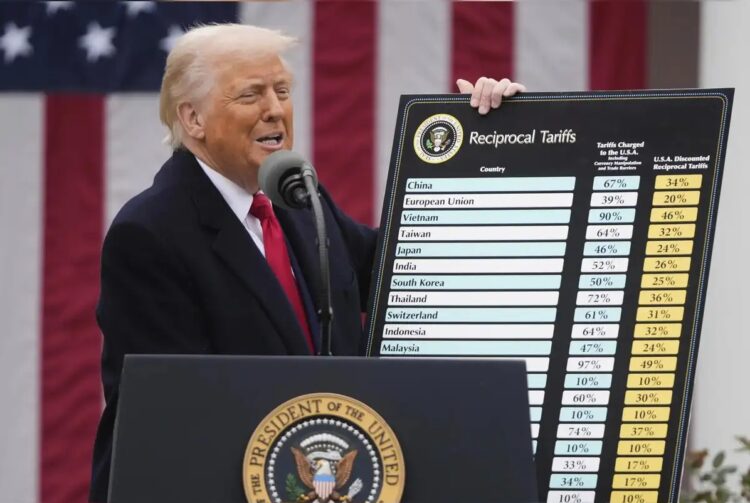In a major move that has shocked global markets, the United States has announced a 245% tariff on all imports coming from China. This decision was taken by US President Donald Trump’s administration as part of the ongoing trade war between the two economic giants. The announcement was made through an official White House fact sheet released late on Tuesday evening.
According to the statement, these harsh tariffs are part of Donald Trump’s revived “America First” trade strategy. This policy aims to protect American industries from what Trump calls “unfair trade practices” by other countries. The new 245% tariff targets only China for now, as other nations are currently in talks with the US to revise trade agreements.
The White House clarified that earlier, on a day marked as Liberation Day, Trump had imposed a 10% tariff on all countries that heavily taxed American goods. However, that was later paused when more than 75 countries approached the US for negotiations. The only exception is China, which reportedly retaliated instead of seeking a compromise, leading to the new and much higher tariffs.
This isn’t the first time the US and China have clashed over trade policies. The trade war, which started during Trump’s first term, has already seen several rounds of tit-for-tat tariff increases. Just before the 245% tariff announcement, the US had already imposed a 145% tariff on Chinese goods. In response, China imposed a 125% tariff on US goods and also placed restrictions on the export of essential materials used in aerospace and military manufacturing.
China’s Foreign Ministry spokesperson, Lin Jian, strongly responded to the latest move. He said the US was the one who started the trade war and maintained that China is standing firm on its position. When asked about the specific tariff rates, Lin pointed journalists back to the US, saying, “You can ask the US side for the specific tax rate figures.”
Meanwhile, White House press secretary Karoline Leavitt addressed the media and said President Trump is still open to a trade agreement with China, but the next step must come from Beijing. “China needs to make a deal with us; we don’t have to make a deal with them,” Leavitt quoted Trump as saying. She also emphasized that the American market is extremely valuable to China. “China wants what we have, the American consumer. In simple terms, they need our money.”
These rising tensions between the US and China have created fear among investors worldwide. Stock markets in many countries saw sudden drops due to concerns over how this might affect global trade. When two of the world’s largest economies fight like this, it can disrupt supply chains, raise prices on imported goods, and hurt small businesses in many countries.
Experts believe that if this situation continues to escalate, it could lead to a long-term slowdown in the global economy. Economists warn that higher tariffs not only affect the countries directly involved but also impact countries that rely on international trade.
While trade discussions with over 75 countries are ongoing, China is currently not part of those negotiations due to its retaliatory stance. The Trump administration has made it clear that unless China changes its position and comes forward for talks, the tariffs will remain in place.
For now, all eyes are on Beijing to see whether it will take any steps toward easing tensions or respond with more restrictions. Until then, the world will have to brace for more uncertainty in trade and markets.
This dramatic increase in tariffs marks another intense chapter in the US-China trade war, with global consequences. The situation remains unpredictable, but one thing is clear: both sides are standing firm, and the world economy is caught in the middle.

















Comments